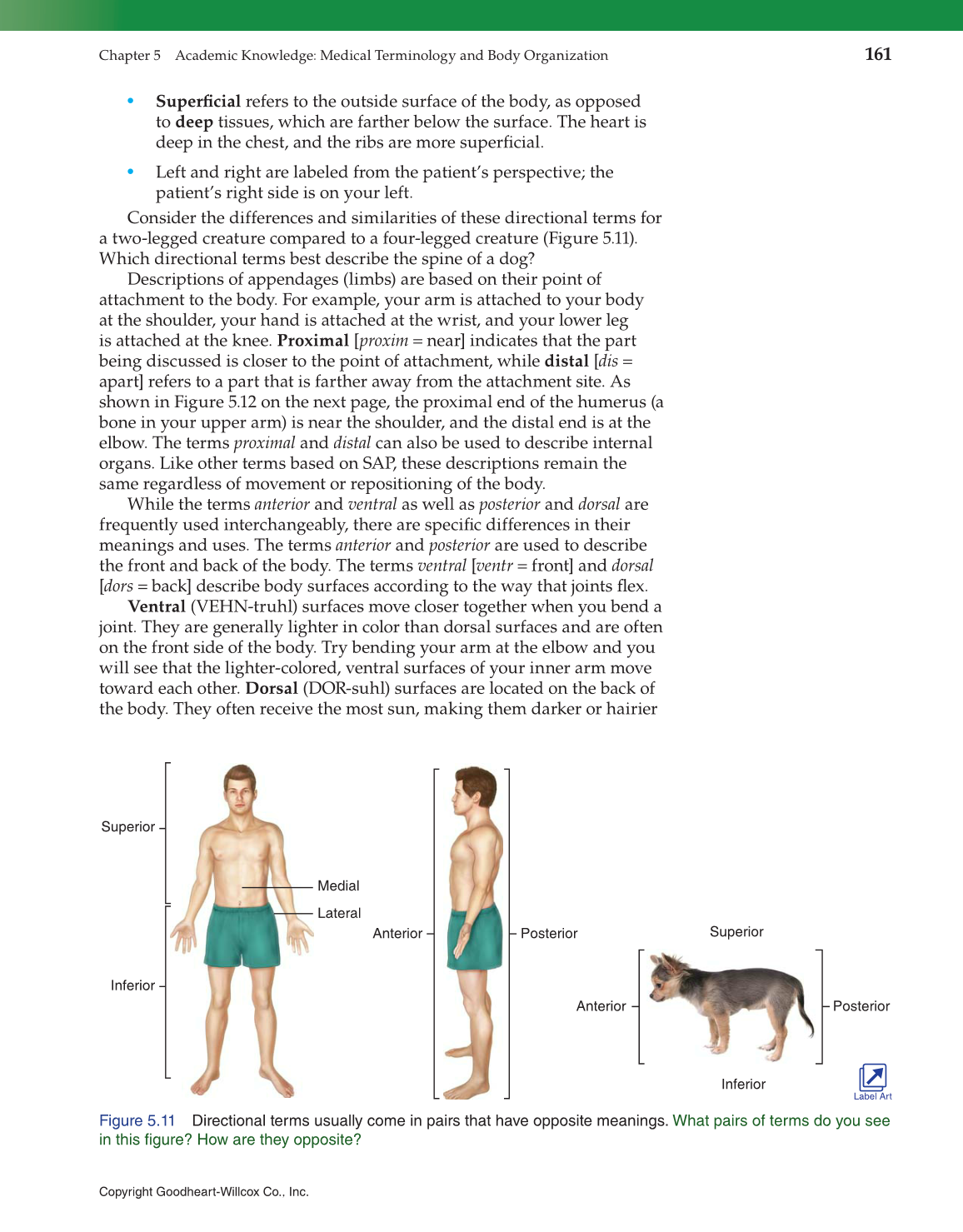Copyright Goodheart-Willcox Co., Inc.
Chapter 5 Academic Knowledge: Medical Terminology and Body Organization
161
• Superfi cial refers to the outside surface of the body, as opposed
to deep tissues, which are farther below the surface. The heart is
deep in the chest, and the ribs are more superfi cial.
• Left and right are labeled from the patient’s perspective; the
patient’s right side is on your left.
Consider the differences and similarities of these directional terms for
a two-legged creature compared to a four-legged creature (Figure 5.11).
Which directional terms best describe the spine of a dog?
Descriptions of appendages (limbs) are based on their point of
attachment to the body. For example, your arm is attached to your body
at the shoulder, your hand is attached at the wrist, and your lower leg
is attached at the knee. Proximal [proxim = near] indicates that the part
being discussed is closer to the point of attachment, while distal [dis =
apart] refers to a part that is farther away from the attachment site. As
shown in Figure 5.12 on the next page, the proximal end of the humerus (a
bone in your upper arm) is near the shoulder, and the distal end is at the
elbow. The terms proximal and distal can also be used to describe internal
organs. Like other terms based on SAP, these descriptions remain the
same regardless of movement or repositioning of the body.
While the terms anterior and ventral as well as posterior and dorsal are
frequently used interchangeably, there are specifi c differences in their
meanings and uses. The terms anterior and posterior are used to describe
the front and back of the body. The terms ventral [ventr = front] and dorsal
[dors = back] describe body surfaces according to the way that joints fl ex.
Ventral (VEHN-truhl) surfaces move closer together when you bend a
joint. They are generally lighter in color than dorsal surfaces and are often
on the front side of the body. Try bending your arm at the elbow and you
will see that the lighter-colored, ventral surfaces of your inner arm move
toward each other. Dorsal (DOR-suhl) surfaces are located on the back of
the body. They often receive the most sun, making them darker or hairier
Figure 5.11 Directional terms usually come in pairs that have opposite meanings. What pairs of terms do you see
in this fi gure? How are they opposite?
Anterior Posterior
Inferior
Lateral
Superior
Medial
Anterior Posterior
Inferior
Superior
Label Art
